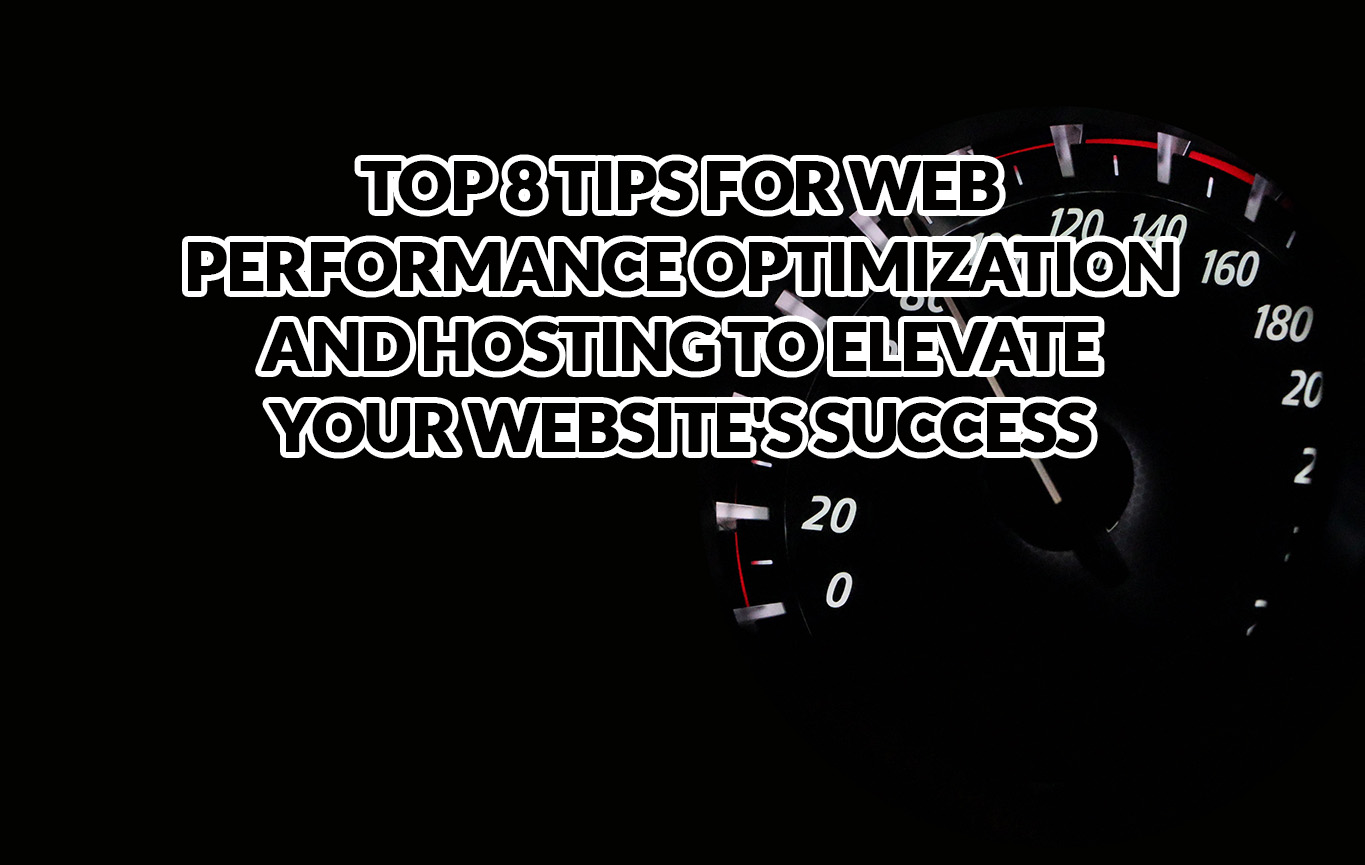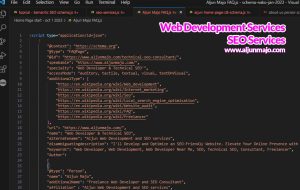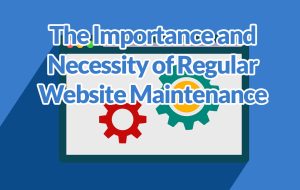Top 8 Tips for Web Performance Optimization and Hosting to Elevate Your Website’s Success

Hey there, fellow web enthusiasts! As a web performance optimization and hosting specialist, I’ve been in your shoes – constantly searching for innovative ways to make my websites faster and more reliable. We all know that today’s internet users are an impatient bunch; they demand lightning-fast load times and won’t hesitate to bounce if a site takes too long to appear before their eyes. So how do we stay ahead of the curve? By mastering the art of web performance optimization and choosing the best hosting options available!
In this article, I’m going to share some of my favorite tips, tricks, and insights from years of experience in the industry. Together, we’ll explore cutting-edge tools and techniques that can help us optimize our sites for speed, security, and overall user satisfaction. And don’t worry – it’s not all about spending big bucks on fancy servers or elaborate infrastructure (though that can certainly help). We’ll also cover cost-effective solutions that can make a significant impact on your site’s performance. So let’s dive in and unlock the full potential of our digital creations!
Implementing Gzip Compression To Improve Page Load Time And Site Speed
Have you ever wondered why some websites load faster than others? Well, one of the secrets to achieving lightning-fast site speed is implementing Gzip compression. You see, when your website’s files are compressed, it takes up less bandwidth and significantly reduces page load time. It’s like packing your suitcase for a trip: the more efficiently you pack (compress) your belongings (files), the quicker and easier it is to carry (load) them. And don’t worry, even if you’re not a tech wizard, most hosting partners offer this feature as part of their services.
Now, let me tell you how Gzip compression works its magic. When a user visits your website, their browser sends a request to your server for the required files. With Gzip compression enabled, your server compresses these files before sending them over to the user’s browser. Once received, the browser then decompresses these files and displays the content on your site. This entire process results in reduced data transfer and ultimately leads to faster page load times.
You might be thinking that implementing Gzip compression sounds complicated or time-consuming. But trust me, it’s easier than you think! Most hosting partners have built-in tools or plugins that make enabling Gzip compression as simple as flipping a switch. So why not take advantage of this powerful optimization technique? Remember, online success isn’t just about having an aesthetically pleasing website or amazing content; it’s also about providing users with a seamless browsing experience – and blazing-fast site speed is key to achieving that!
So there you have it – by using Gzip compression, you can significantly improve both page load time and site speed without breaking a sweat! Now that we’ve tackled this crucial aspect of web performance optimization, let’s move on to another important topic: database optimization in CMS for boosting performance and efficiency even further!
Database Optimization In Cms: How To Boost Performance And Efficiency
Wow, compressing your site’s files with Gzip really made a huge difference in page load time and site speed, didn’t it? But there’s still more we can do to optimize your website. Let’s now focus on an aspect that often gets overlooked – database optimization in content management systems (CMS). By streamlining the way our CMS handles data, we can significantly improve both performance and efficiency.
First things first, let’s talk about what database optimization entails. It involves improving the way your CMS stores, retrieves and manages data for your website. This is crucial because as your site grows and more content is added, the database can become cluttered and slow down your site’s performance. By optimizing your database, you’ll help maintain the cms performance at its peak while delivering content faster through content delivery networks. This will ultimately result in a better user experience for your visitors.
Now you may be wondering how to go about optimizing your database. Well, there are several methods to consider, such as cleaning up unused tables or rows from plugins that have been deactivated or deleted over time. Another important step is to regularly clean up the revision history of posts and pages. These revisions can pile up quickly and contribute to a bloated database which slows down queries. Additionally, you can look into streamlining code by removing unnecessary custom fields or metadata that may have accumulated throughout the development process.
Just imagine how much smoother your website will run once you’ve optimized its database! The best part is that these improvements not only make a noticeable impact on user experience but also enhance the efficiency of content delivery networks when serving up those precious assets to users worldwide. With our newly optimized database in place, let’s continue our journey to create an even faster website by exploring ways to reduce web font usage for an enhanced site speed and user experience!
Reducing The Use Of Web Fonts To Enhance Site Speed And User Experience
Alright, let’s talk about web fonts. You know, those fancy typefaces that give your site some extra flair? While they might look great, they can also slow down your site and negatively affect user experience. So, let’s dive into how reducing the use of web fonts can enhance your site speed and overall user experience.
There are a few reasons why web fonts can be a drag on your site speed:
- They increase the number of HTTP requests, which means more time spent loading resources
- Some web fonts can be quite large in file size, taking up valuable bandwidth
- The global impact of loading various font files from different locations can add up quickly
- Depending on the device or browser, web fonts might not even render properly
That being said, there are some tricks you can use to still have an aesthetically pleasing website without sacrificing performance:
- Minify CSS: This will reduce the file size and help load your styles faster.
- Lazyload: Instead of loading all font files at once, lazyload them as needed when users scroll down the page.
- Limit font variations: Stick to one or two font families for consistency and reduced load times.
- Use system fonts when possible: By using default system fonts, you avoid making additional HTTP requests for external font files.
Now that we’ve looked at ways to minimize the impact of web fonts on our site’s performance, it’s important to remember that this is just one piece of the puzzle. There are plenty more optimizations that we need to consider in order to achieve lightning-fast load times and a seamless user experience. With that in mind, let’s move on to our next topic: streamlining your website’s code and reducing HTTP requests for improved performance.
Streamlining Your Website’s Code And Reducing Http Requests For Improved Performance
Now that we’ve explored the benefits of reducing web font usage, let’s dive into another crucial aspect of web performance optimization – streamlining your website’s code and reducing HTTP requests. This not only results in a faster loading site but also enhances user experience, making it more likely for visitors to stay engaged with your content.
One of the best ways to streamline your code is by minifying JavaScript and HTML files. Minification removes unnecessary characters such as whitespace, comments, and line breaks from your files without affecting their functionality. By doing so, you effectively reduce the size of these files and decrease the time needed for browsers to download them. Moreover, you can leverage prefetching and preconnecting techniques to instruct browsers on which resources to load in advance. Prefetching allows browsers to fetch necessary resources before they’re actually needed, while preconnecting establishes network connections ahead of time. Both techniques contribute significantly to improving page load speeds.
Another valuable strategy in optimizing your website’s performance is prerendering critical pages or elements of your site. Prerendering allows a browser to render a page in the background before a user even clicks on the link or navigates to that specific part of your site. This method essentially gives users the perception that pages are loading instantly when they interact with them – an excellent way to enhance user experience.
So there you have it! Streamlining your website’s code through minification, utilizing prefetching and preconnecting techniques, as well as implementing prerendering can drastically improve overall site performance and user experience. With these optimization strategies under our belt, let’s move forward and explore how maximizing global impact with content delivery networks (CDNs) can take our website performance up another notch!
Maximizing Global Impact With Content Delivery Networks (CDNs)
Imagine the feeling of satisfaction when your website not only loads at lightning speed but also reaches users across the globe in a fraction of a second. That’s the power of Content Delivery Networks (CDNs) working their magic! They’re an essential part of web performance optimization and hosting strategies, and they can help you maximize your global impact. Let’s dive into how CDNs can give your online presence that extra edge.
First, let’s talk about what CDNs actually do. These networks consist of servers distributed around the world, designed to store and deliver copies of your website’s static assets, such as images, videos, and stylesheets. When someone visits your site from a distant location, a CDN will serve those files from the server closest to them instead of making them wait for data to travel all the way from your main server. This dramatically reduces latency and ensures that visitors don’t bounce away due to slow load times.
But there’s more to it than just speed. CDNs also offer various performance enhancements like compression algorithms and intelligent caching mechanisms that optimize web content delivery. Additionally, they provide security benefits by protecting against Distributed Denial-of-Service (DDoS) attacks, hiding your origin server’s IP address, and even offering SSL encryption for secure connections. With these features combined, CDNs not only boost user experience but also contribute significantly to overall website reliability.
Now that we’ve seen how CDNs can revolutionize your website performance on a global scale, it’s time to think about finding the perfect hosting partner who offers this invaluable service as part of their package. In our next section about “Finding the perfect hosting partner for your online success: tips and tricks”, we’ll delve into key factors you should consider when choosing a provider who will support you in harnessing the true potential of Content Delivery Networks for maximum impact across borders.
Finding The Perfect Hosting Partner For Your Online Success: Tips And Tricks
Let’s face it – we all want our websites to be wildly successful, don’t we? But in order to achieve that, it’s absolutely essential to find the perfect hosting partner who will support and nurture your online growth. In this section, we’ll explore some tips and tricks for finding the best hosting provider for your unique needs.
To make sure that you’re not settling for anything less than the best, keep these key considerations in mind when searching for a hosting partner:
- Performance: Look for a provider with top-notch server performance and fast response times.
- Scalability: It’s crucial to choose a host that can handle your website’s growth without any hiccups.
- Support: A reliable customer support team can make or break your experience with a host, so prioritize providers who offer excellent assistance.
- Security: Protecting your website should be a top priority – select a host that offers robust security features.
- Pricing: While it might be tempting to choose the cheapest option, remember that you often get what you pay for – weigh pricing against features and support.
Now that you’ve got an idea of what to look out for in a hosting provider, how do you actually go about finding one? Well, start by doing thorough research on various hosts – read reviews from other users and compare their offerings. You can also ask fellow entrepreneurs or industry peers for recommendations based on their experiences. And don’t forget: before committing to any host long-term, take advantage of free trial periods or money-back guarantees to test out their services yourself.
By following these tips and tricks, you’re sure to find the perfect hosting partner in no time – one who will fuel your online success journey. The next step is optimizing your website’s performance even further through techniques such as minifying and combining CSS, JavaScript, and HTML files – let’s dive into how this is done!
Minify And Combine CSS, JavaScript, And Html Files For Improved Site Speed
You might have noticed that your website’s speed isn’t quite up to snuff, and it’s time for a change. One of the most effective ways to improve site speed is by minifying and combining your CSS, JavaScript, and HTML files. This process not only reduces the file sizes but also cuts down on the number of requests made by a browser when loading your web page. By doing this, you’re giving your users a more seamless experience with faster load times – who doesn’t love that?
Let me tell you how the magic works. Minification is the process of removing all unnecessary characters from your code, such as white spaces, line breaks, and comments. This leaves you with a leaner file that’s easier for browsers to read and process. Combining files is just what it sounds like – merging multiple CSS or JavaScript files into one so that there are fewer individual requests for browsers to deal with.
I know what you’re thinking: “But I’m not an expert in coding! How do I even begin?” Fear not! There are plenty of tools available online that can help you effortlessly minify and combine your files, such as UglifyJS for JavaScript or CleanCSS for CSS. Additionally, most content management systems (CMS) like WordPress offer plugins specifically designed to handle these tasks automatically. Here is my other blog post about WordPress Speed Optimization Made Easy: Tips and Tools for Non-Web Developers
Now that you’ve got the hang of minifying and combining files, let’s kick things up a notch. To further enhance your site’s performance and keep those visitors coming back for more, consider using lazyload, prefetch, preconnect, and prerender techniques to speed up your site even more! Remember: innovation starts with taking action – so let’s dive right in!
Consider Using Lazyload, Prefetch, Preconnect, And Prerender Techniques To Speed Up Your Site
As we continue our journey to optimize our website’s performance, let’s dive into some advanced techniques that can give us a noticeable boost in speed. I’m talking about lazy loading, prefetching, preconnecting, and prerendering. These strategies are not only useful for improving the overall user experience on your site but also contribute to reducing server load and bandwidth usage.
Lazy loading is a fantastic technique that involves loading only what’s needed when it’s needed. For instance, if you have an image-heavy webpage, instead of loading all the images at once (which can significantly slow down page load time), you can use lazy loading to load images as users scroll down the page. By implementing this approach, you’re ensuring that your visitors won’t have to wait for everything to load before they can start enjoying your content.
Here are five ways these techniques can benefit your site:
- Faster initial page load times: Your visitors won’t have to wait for the entire page to load before they start interacting with your content.
- Reduced server load: Prefetching and preconnecting help reduce the number of requests made by your site, resulting in decreased pressure on your servers.
- Improved user experience: Lazy loading ensures that content is delivered only when needed, making for a smoother browsing experience.
- Greater efficiency in resource usage: By utilizing these techniques, you’re ensuring optimal use of available resources such as bandwidth and memory.
- Increased likelihood of retaining visitors: If your site loads quickly and performs well, people are more likely to stick around and explore more content.
So there you have it – four powerful techniques that go hand-in-hand with web performance optimization: lazyloading, prefetching, preconnecting, and prerendering. Implementing these methods will not only make your site faster but also provide a better user experience for your audience. And who doesn’t want happier visitors? Give these strategies a try, and watch your site’s performance soar.
Conclusion
In conclusion, optimizing your website’s performance and choosing the right hosting partner are crucial steps in ensuring a seamless user experience. By implementing techniques like Gzip compression, database optimization, and minimizing web fonts, you’ll be well on your way to improving site speed and overall efficiency.
Remember, a faster website not only enhances user satisfaction but also boosts search engine rankings. So, invest time in fine-tuning your site’s performance and watch as it propels your online success to greater heights!


